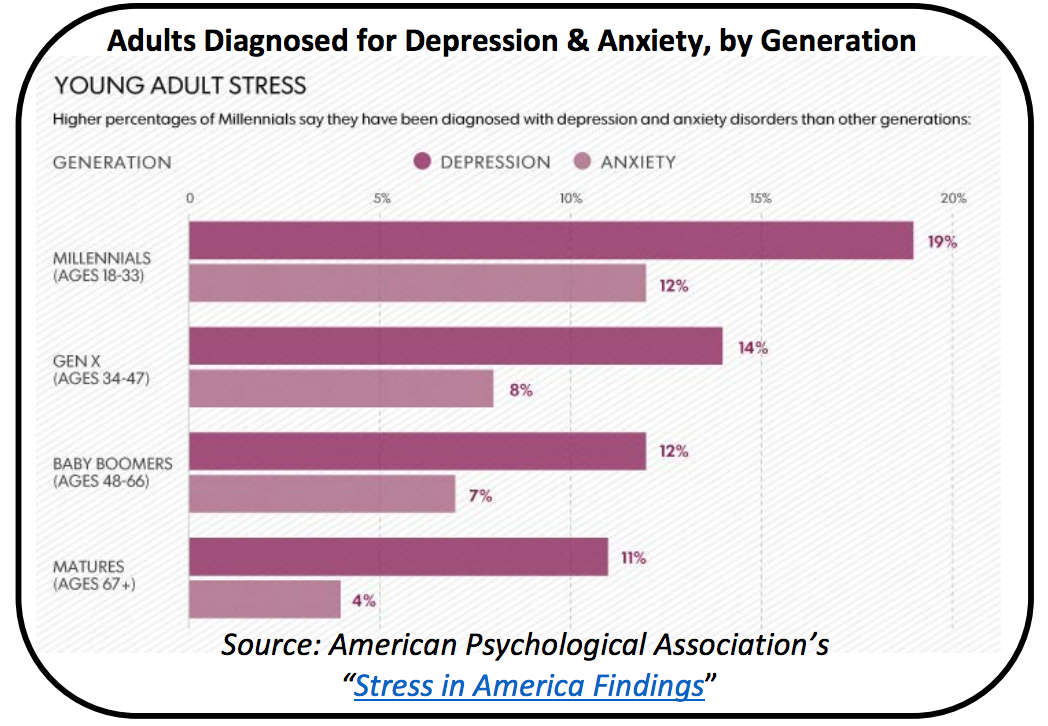Living in the Present Moment? A Guide to Mindfulness for Busy Millennials
“Be happy in the moment, that’s enough. Each moment is all we need, not more.”
— Saint Mother Teresa
The goal of every hard-working millennial is to find peace and presence amidst the chaos of modern life. But with the constant pull of notifications, deadlines, and endless to-do lists, it can be tough to stay grounded, especially when it feels like the world never slows down. This struggle often leaves us in a state of mental exhaustion, making it hard to enjoy daily moments and genuinely connect with loved ones.
Maybe you’ve tried mindfulness apps or quick breathing exercises, wondering why they don’t seem to stick or bring lasting calm. This can leave you feeling discouraged and questioning whether true peace is even achievable. Today, you’re in luck! I’m sharing simple mindfulness techniques that help you embrace the present moment, reduce stress, and find joy even in life’s busiest times—without adding more tasks to your plate. I'll cover what mindfulness is, why it’s essential, and how you can start practising it in small, meaningful ways. Keep reading for more details.
What Is Mindfulness?
Mindfulness is the practice of bringing your full attention to the present moment without judgement. It aims to help you feel connected to yourself and your surroundings, reduce stress, and increase your ability to enjoy life. It’s a flexible practice that can fit into any part of your day and is particularly beneficial for those who often feel like there aren’t enough hours in the day.
Mindfulness works across various aspects of life—from savouring a morning coffee to fully engaging in a conversation. It helps millennials, who often juggle multiple responsibilities, find balance, self-acceptance, and an improved focus on what truly matters.
Why Is Mindfulness Important?
Studies show that millennials report higher levels of anxiety and stress than previous generations (see graph showcasing this from a recent study below!). The constant pressure to perform at work, maintain relationships, and stay financially afloat takes a toll on mental wellbeing. According to research, practising mindfulness has been linked to lower stress, reduced symptoms of anxiety, and improved focus and productivity.
By making mindfulness part of your routine, you’ll create a space to decompress and reset, helping you maintain better mental clarity and emotional stability.
Mindfulness also helps you reframe your thinking and find joy in the present, allowing you to escape the overwhelming cycle of “what’s next?”. Instead of feeling like you're constantly chasing something, mindfulness enables you to appreciate and connect with what you have right now.
Mindfulness Examples
If mindfulness sounds challenging to fit into an already packed schedule, I get it. Starting with mindfulness can feel overwhelming, especially when life feels like one continuous task list. Here are some examples that make it easy to add moments of presence to your daily life.
Mindful Morning Routine
This involves taking a few minutes in the morning to set a calming tone for your day. Instead of immediately checking your phone, you might sip your coffee slowly, noticing its warmth and aroma. It’s not about doing more but experiencing fully what you’re already doing.Mindful Eating
Often, meals are rushed or eaten on the go. With mindful eating, you slow down, savour each bite, and pay attention to your food’s textures and flavours. This helps cultivate gratitude for your meal and nourishes your body and mind simultaneously.Intentional Breaks Throughout the Day
When you take a break, try to focus on your breathing, do a quick body scan to release tension, or step outside to feel the fresh air. Even a 3-minute mindful pause can reset your mind, bringing you back to work refreshed. Speaking of which, check out this short and simple mindfulness exercise below!
Tips for Mindfulness Success
Here are a few tips to help you maximise your mindfulness practice:
Start Small
Begin with just a few minutes a day. Aiming for short, focused moments is more manageable than long meditation sessions and helps build consistency. When you take a few mindful breaths, you give yourself a chance to ground yourself in the present.Anchor Your Attention
To get the most from mindfulness, try focusing on a specific “anchor”—like your breath, surroundings, or a specific part of your body. This will help you break free from racing thoughts and cultivate a calming, restorative space. For example, whenever you feel overwhelmed, gently refocus your mind by breathing in deeply and slowly.Reflect and Track Your Progress
Journaling your thoughts after a mindful moment can be valuable for reflection. This way, you can see how these small practices improve your mood and stress levels.Incorporate Mindfulness Into Routine Activities
Whether washing dishes or commuting, bring mindfulness into these routine tasks. You’ll be surprised by how calming it is to fully immerse yourself in a typically mundane moment.
To get started:
Identify small moments in your day to introduce mindfulness.
Set aside a few minutes each morning for intentional breaths.
Check in with yourself at the end of the day to reflect.
Start Mindfulness Today
I hope this guide has shown you that mindfulness doesn’t have to be a grand, time-consuming commitment. The best way to start is with a few minutes each day, helping you create space for peace and presence. These small practices can add up to big benefits in stress reduction, focus, and overall joy.
So, what do you say? Are you ready to start?
Free Mindfulness Workbook and Journal to Deepen Your Mindfulness Practice
Now that you know the basics of mindfulness, grab your Mindfulness Workbook and Journal to track your progress and easily add moments of mindfulness to your day. This journal includes 50 pages of daily prompts and reflection sections, keeping you inspired to stay connected to the present.


